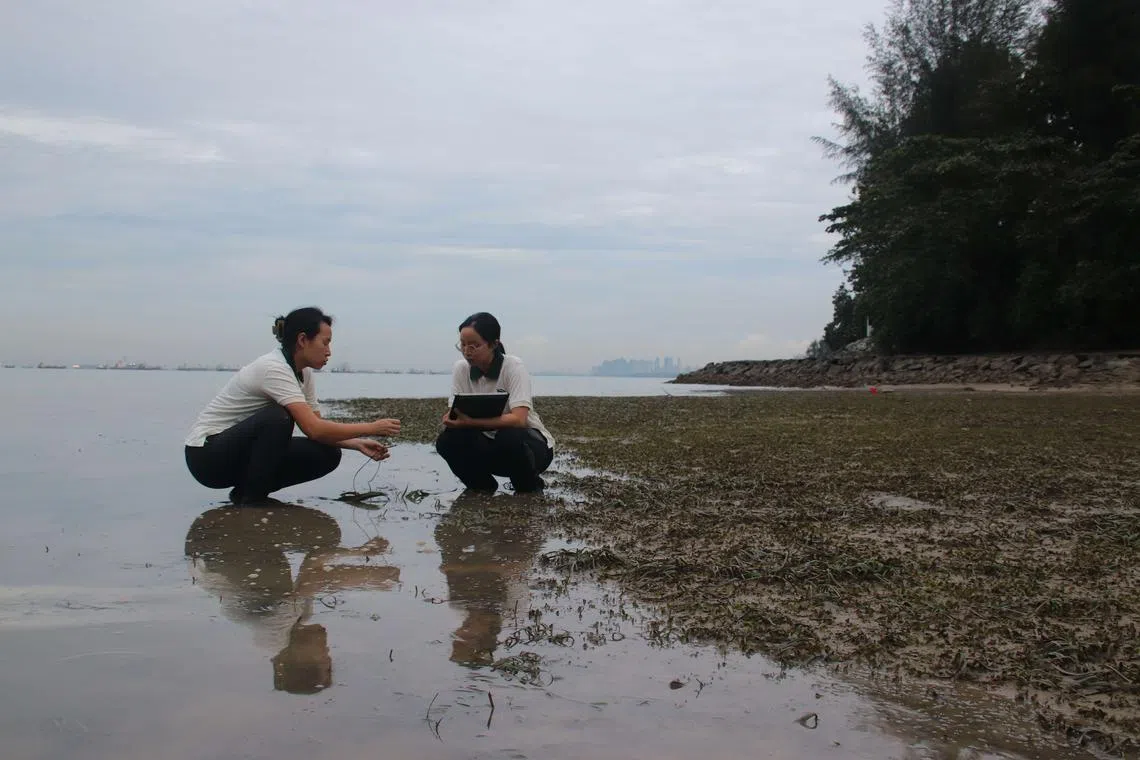OCBC commits about S$1 million to seagrass restoration project
The bank collaborates with National Parks to enhance marine biodiversity conservation efforts
OCBC partnered National Parks (NParks) for Singapore’s first seagrass restoration project, the bank announced on Friday (Sep 27). The bank has pledged almost S$1 million for the initiative.
The three-year project – fully funded by OCBC – focuses on increasing the survival rate of seagrasses, a flowering plant that grows in marine environments. Seagrass habitats can be found on the northern and southern shores of Singapore.
Researchers from NParks and the National University of Singapore (NUS) will study the reproductive characteristics of seagrasses, and develop and test methods to improve seagrass transplants. They will survey Singapore’s seagrass meadows to track the flowering and fruiting of the plant.
Benefits of seagrass restoration efforts
Tan Kiat How, senior minister of state for National Development and Digital Development and Information, said: “Our seagrass meadows, a significant part of Singapore’s rich natural heritage, provide a variety of ecosystem benefits – from providing food and shelter for marine species, to contributing to carbon sequestration and coastal protection.”
Carbon sequestration is a process that reduces the amount of carbon dioxide in the atmosphere by capturing and storing it.
OCBC noted that these meadows can store carbon up to 40 times more effectively than terrestrial forests.
“Although seagrass meadows cover only 0.2 per cent of the world’s ocean floor and seabed, they store up to 18 per cent of oceanic carbon,” it added.
Helen Wong, group chief executive of OCBC, said: “The OCBC Seagrass Restoration Project will go a long way in our carbon sequestration efforts. When we assessed projects with NParks to fight climate change, we wanted projects with big impact.”

A global decline
Seagrass meadows have declined worldwide because of pollution, shoreline modification and climate change, noted the bank. More than 45 per cent of seagrass meadows in Singapore have disappeared over the past five decades.
OCBC said current methods to transplant seagrasses have a low success rate due to a “lack of understanding of the factors affecting seagrass survival in challenging underwater conditions, such as that of Singapore’s waters”.
The project will study ways to “quantify the benefits” of the restoration efforts, added OCBC. It will measure tangible outcomes, such as the increase in carbon sequestration and increases in species diversity.
OCBC and NParks will use research and findings from the project to develop established procedures for future local restoration efforts.
Additionally, staff volunteers from the bank and members of the public may participate in the project by helping to conduct surveys on the plants’ flowering process, assist in the transplanting process, and more.
Carbon sequestration efforts
OCBC has partnered NParks since 2017 for other carbon sequestration projects, such as habitat enhancement at Coney Island Park, the OCBC Arboretum and the OCBC Mangrove Park.
The bank noted that these initiatives, as well as its other restoration efforts, collectively allow for the absorption of more than 110 million kg of carbon dioxide.
Wong said: “Whether it is the dipterocarp trees at the OCBC Arboretum, the mangroves at OCBC Mangrove Park or seagrass with the OCBC Seagrass Restoration Project, they function as carbon sinks, all highly effective in carbon capture and storage.”
Decoding Asia newsletter: your guide to navigating Asia in a new global order. Sign up here to get Decoding Asia newsletter. Delivered to your inbox. Free.
Copyright SPH Media. All rights reserved.


